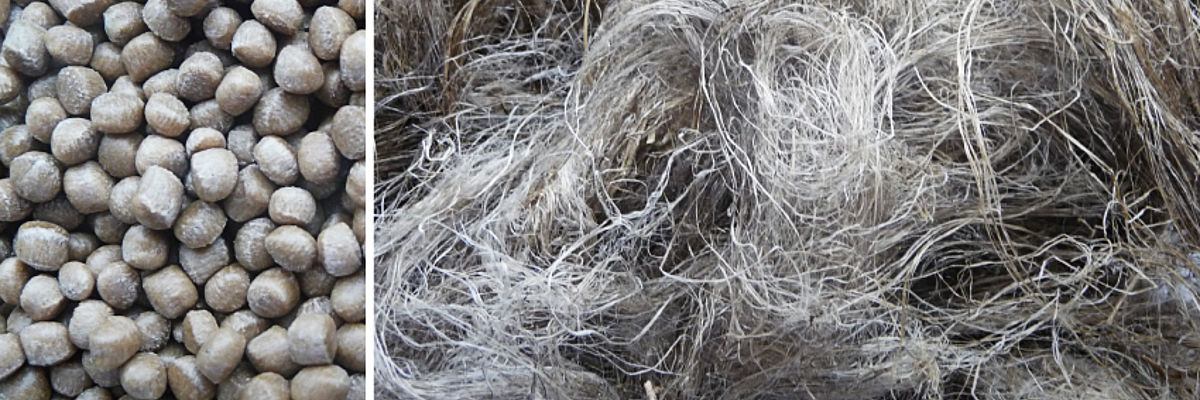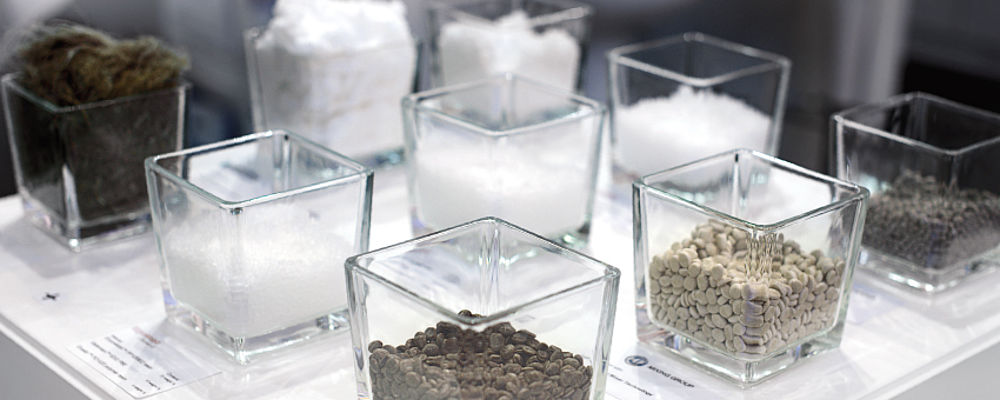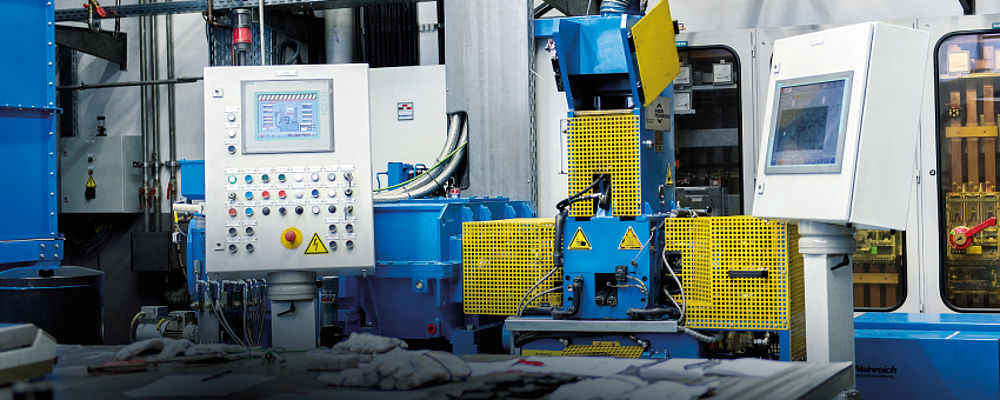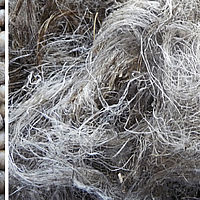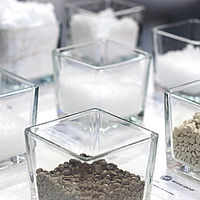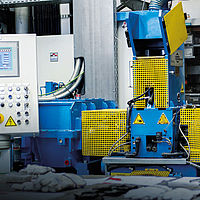As elsewhere, the use of renewable raw materials as reinforcement fibres has been playing an ever increasing role in the automotive industry in the past several years. Modern cars now contain an average of five to seven kilogrammes of natural fibre materials. In German luxury cars, approximately 90% of interior furnishings are made of natural fibre-reinforced plastics (NFP), and in mid-range cars that figure is about 60%: applications include interior door trim, boot linings, spare wheel wells and covers, column trim, instrument panels, roof linings, ventilation screens, parcel shelves, glove boxes, and seat shells and backs. However, NFP is also seeing increased usage in exterior components. The standard production underbody of the Mercedes A and B-Class, for example, is reinforced with abaca fibres by means of impact extrusion. Besides flow- and compression-moulded parts in particular, NFP-based components produced by injection moulding also provide a lot of potential worth exploiting.
Natural fibres for lightweight construction in the automotive industry
At Ford, researchers have been looking for ways to integrate natural materials into automotive construction ever since the company was established over a hundred years ago. Today, more than 300 components made of natural materials are already used in Ford vehicles – including, among others, the Fiesta, the Focus and the Mondeo. The natural materials are integrated primarily where they cannot be seen: in instrument panels, door trim or bumper systems, for example. ‘We are working intensively on the development of bio-based materials. Fibre compounds are part of this sustainable development strategy,’ explains Maira Magnani, Research Engineer for Advanced Materials & Processes at Ford Research & Advanced Engineering Europe. ‘Applications are being studied in all areas – including the engine compartment, the vehicle interior, and exterior components. The main criterion for evaluating where and when it makes sense to substitute NFP for conventional materials is a positive ecological balance sheet. The substitution must not result in increased weight, for example.’
The advantages of NFP are obvious: unlike traditional plastic reinforcement materials such as glass fibres, natural fibre materials have up to 50% lower density, simultaneously reduce the CO2 footprint, and permit not only more material recycling but also 100% thermal disposal of the reinforced plastic. In so doing, they open up whole new opportunities for this type of lightweight construction material, particularly also in the field of electromobility.
The goals of the research and development departments of various automakers are perfectly clear. Natural fibre-reinforced materials are an extremely attractive alternative for injection moulding applications, if material characteristics can be achieved in the range of PP GF20, if unpleasant outgassing effects can be prevented (especially for interior applications), if weight and production costs are lower than those of the component being replaced and if, moreover, the entire manufacturing process is reliably reproducible on an industrial scale.
These automotive industry goals give rise to a whole range of challenges for the selection of suitable reinforcement fibres and matrix materials as well as for the development of the relevant formulations. One problem is that natural fibres are subject to quality fluctuations in response to ambient conditions, and this makes it difficult to maintain narrow tolerances with regard to quality and property profiles. Moreover, the maximum impact strengths that can be achieved are typically relatively low. Above all, the natural fibre conditioning process plays a decisive role in determining the material properties of the natural fibre-reinforced thermoplastics, and therefore ultimately the product characteristics of the component as well.
Challenges in natural fibre processing
The industrial processing of natural fibres, however, also poses new challenges for process and equipment engineering. The standard methods familiar from plastics processing operate continuously and therefore also require a continuous stream of dosable raw materials. Due to their low density and their surface structure, however, natural fibres are barely dosable with gravimetric systems. Maira Magnani of Ford also emphasises, ‘Long term, natural fibre-reinforced plastics and biomaterials have potential for greater significance in vehicle manufacturing applications. But this largely depends on the advanced development of process techniques for large-scale series production applications.’
In order to solve this problem, a great deal of time and money has been invested into researching the relevant pre-treatment steps. Known processes primarily involve the short cutting, grinding or pelletising of fibres to increase bulk density and flowability. From a technical and economic perspective, however, this is counterproductive, because it not only raises the compound’s processing requirements and manufacturing costs, but also significantly reduces the natural fibres’ reinforcing potential, especially when they are short-cut or ground. Other challenges in the conditioning of natural fibres include their temperature sensitivity and their high moisture content. ‘One major challenge with fibre compounds lies in conditioning the natural fibres for further processing and in metering them precisely,’ confirms Magnani.
Internal mixer technology makes process control more flexible
These challenges call for innovative compounder technology for the economic production of this type of lightweight construction material on an industrial scale. Internal mixer technology-based mixing room systems fully satisfy this property profile, especially since no pre-treatment steps are necessary. Nearly any form of addition of material into the internal mixer is possible.
An upstream weighing and metering system feeds the raw materials to be processed into the internal mixer. After completion of the mixing cycle, the finished mixture is then emptied into a discharge extruder. The discharge extruder transforms the batch mixing process into a continuous process and develops the pressure required to force the mixture through the perforated plate of an underwater pelletiser. After underwater pelletisation, the pellets are dried and cooled. They are then conveyed to storage silos, and finally packaged in a bagging unit, big-bag filler or octabin filling station for dispatch to the end consumer.
Another key advantage of internal mixer technology lies in the batch operation of the internal mixer and the associated high level of process flexibility. This can be seen in the mutually independent variable process parameters, such as mixing time, rotor speed, the point in time at which the raw materials to be mixed are added and the sequence in which they are added, the degree of filling and the temperature control of the equipment. Raw material metering and addition are also batch operations, i.e. all of the components used are automatically pre-weighed into portions and also automatically fed at the right point in time via a large feed hatch or other feeder openings into the mixer. That also makes it easy to change formulations.
Depending on their origin or type, the high moisture content of natural fibres naturally differs considerably. For that reason, in continuous mixing processes, the materials must be dried, which is energy- and cost-intensive. This is another disadvantage that the interior mixer does not have, because the process is operated with partially filled material, and the material can be dried practically ‘on-line’ in the early phase of the mixing process by means of die ventilation.
Cooperation with ExxonMobil and Ford
The aforementioned goals from the research and development departments of various automakers represent a real challenge. In order to meet this, the HF MIXING GROUP is cooperating with ExxonMobil Chemical Europe Inc. and Ford. Based on the experience of these two cooperation partners and on the requirements of the automotive industry, test formulations were developed along with the relevant test plan.
For all formulations, the polypropylene homopolymer ExxonMobil PP1055E2 served as matrix material, with the adhesion promoter ExxelorTM PO1020 – a maleic anhydride-grafted homopolypropylene – also originating from ExxonMobil. In addition, depending on the formulation, up to 10% by weight of ExxonMobil PP1055E2 was replaced by VistamaxxTM PBE 6202. VistamaxxTM PBE 6202 is a propylene-based elastomer, the melting point of which is well below that of the polypropylene homopolymer. The HF MIXING GROUP anticipates that the addition of VistamaxxTM PBE 6202 can improve the dispersion of the natural fibres, raise the impact strength of the compound, and lower its melting temperature. That latter improvement is primarily beneficial for gentle downstream processing in injection moulding operations and reduces the risk of unpleasant offgassing from the finished component as a result of thermal damage to the natural fibres during the injection moulding process.
Findings
Preliminary testing in the technical centre of the HF MIXING GROUP on a high-performance IM5E laboratory interior mixer with a total volume of 5.5 litres showed – based on initial visual assessment – that all material combinations produced homogeneous mixtures without forming fibre nests. After scaling up the process parameters on a high-performance IM45E production interior mixer with a total volume of 49 litres, tests also confirmed that fibre bales could be processed in large portions without pre-drying and without upstream cutting or grinding processes.
The finished compound was discharged from the interior mixer as melt and then granulated via a conical dual screw discharge extruder and downstream underwater pelletiser with no problems whatsoever, even where highly filled mixtures were involved. The effect of VistamaxxTM on the result of the mixing and pelletising process was interesting. According to current findings, the point in time at which the VistamaxxTM is added appears to play a decisive role. Excellent results were achieved when the material was added either shortly before the end of the fibre-drying step or only after its completion. The addition of VistamaxxTM significantly enhanced pellet quality, especially in highly filled test compounds.
The test material produced in the mixing trials at the HF MIXING GROUP’s technical centre is currently undergoing further analyses at ExxonMobil. Once the analytical results have been verified and released for publication, we will present them in a follow-up article. The initial results are very promising.

